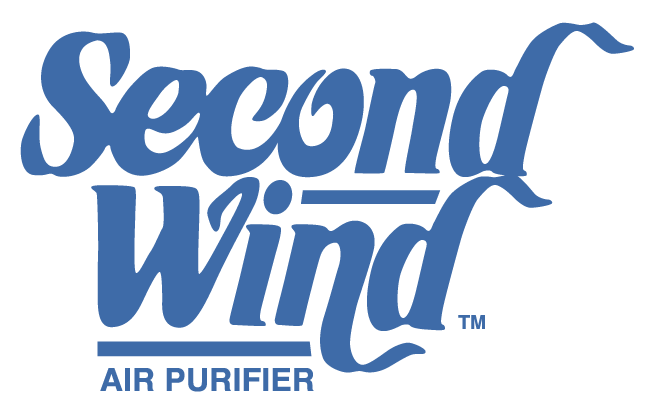HEPA Help Topics
For Tech Support call (866) 476-5101. Be sure to have your model and serial numbers, along with the date of installation ready.
Technology
- What is HEPA?
- How is HEPA made and how does it clean air?
- Should I Install A HEPA Filtration System In My Home?
- Why would I install a HEPA air cleaner Vs another type of air cleaner?
Maintenance
Miscellaneous
- Why should I run my HEPA air cleaner continuously 24/7?
- How much does a HEPA air cleaner cost?
- What is a Particle?
- What is a Micron?
- Can I buy a HEPA filter for a non-HEPA air cleaner?
- What is VOC?
- What is an activated carbon filter?
What is HEPA?
HEPA is an acronym for "High Efficiency Particle Arrestor". Basically HEPA is a type of filter that can trap the smallest particles (0.3 micrometers (µm) in diameter) that other air filtration systems would simply re-circulate back into the air of your home. HEPA filters remove 99.97% of all airborne particles that can cause problems for allergy and asthma sufferers, reducing or eliminating them to make the air cleaner for those residing in your home.
In the 1950’s during WWII, HEPA filters were invented by the US Atomic Energy Commission (AEC), who needed something that would remove small radioactive dust particulates from the air. In the last decade HEPA-technology air purifiers have been used to clean indoor spaces from homes to beauty salons to hospitals and operating rooms across the country. The Environmental Protection Agency (EPA) as well as the Occupational Safety and Health Administration have endorsed the HEPA filter as being the absolute best filter for cleansing the air.
How is HEPA made and how does it clean air?
The difference between a HEPA filter and other filters is that HEPA filters are made of thin fibers of glass, and contain some level of activated carbon-based material. The fibers of the filters are formed into a thick paper-like material that is pleated, with some HEPA air filtration systems having as much as 40 square feet of the folded filter material in the HEPA system. As particulates in pre-treated air attempt to pass through the filter’s thick, folded surface they cannot; instead, they adhere to it.
There are three ways the HEPA filter stops particulates:
- First, particulates simply run into the fiber and stick.
- Secondly, when particulates get within one diameter of the filter’s fiber, rather than passing through the fiber they are drawn to, and get stuck on, the fiber.
- Third, as a very small particle (about 0.1 micron) moves through the filter it collides with other molecules (Brownian motion) and again gets caught in the fiber.
Since pure HEPA air filters do not remove odors, chemicals or gasses, HEPA air purifiers have some level of activated carbon-based material to absorb odors and chemicals that are not caught by the HEPA element.
Air is drawn into your HEPA system and through the HEPA filter. Because HEPA Air Filtration Systems combine HEPA filters with carbon-based materials, they stop mold spores, bacteria, viruses, pet dander and dust, and also help to eliminate harmful gasses and odors from your home. The air that leaves this type of air purifying system is cleansed and almost totally free from contaminants.
Incorporating this technology, GeneralAire® Models 400D & 400R HEPA Air Filtration Systems are 99.97% efficient at removing particles 0.30 microns from the air that passes through the HEPA filter.
Should I Install A HEPA Filtration System In My Home?
If you or someone else in your home suffers with allergies or asthma, the GeneralAire® 400D (for duct installation) or 400R (portable room unit) HEPA Air Filtration System can undoubtedly make a difference in your lives.
Studies show that young, asthmatic children who had HEPA air cleaners in their bedrooms for almost four months showed fewer asthma symptoms. Even if asthma or allergies are not a problem to your family, just breathing clean air can be an added bonus in itself.
How often should I change my HEPA filter?
A GeneralAire® HEPA system requires you to change the pleated filter with carbon every 6 months to a year, and the pleated HEPA filter once every two years. Adhering to this schedule will ensure your HEPA system works as designed to clean harmful particulates and gasses from your indoor air.
Can I buy a HEPA filter for a non-HEPA air cleaner?
GeneralAire® HEPA air cleaner is your best bet for complete air cleaning; however, filters with a MERV rating between 11 & 13 are likely to be nearly as effective as a true HEPA air cleaning system. You might also consult your local contractor prior to installing a filter with a higher MERV rating, as a filter with a higher MERV rating increases the demand on your furnace to move air through the filter. Depending on your home's furnace model, it may reduce the life of your furnace.
Why would I install a HEPA air cleaner Vs another type of air cleaner?
HEPA air cleaners are used in homes, beauty salons, airplanes, laboratories, hospitals and operating rooms across the country because they are the most efficient in removing 99.97% of dust, pollen, mold bacteria and other particulates as small as 0.3 microns in size. The more adversely you feel the effects of airborne particulates or the more polluted your environment is, the more you may consider installing a HEPA system.
Why should I run my HEPA air cleaner continuously 24/7?
To be truly effective all air cleaners and purifiers should run continuously. Scientific research shows that indoor air pollution rapidly returns to pre-treatment levels when a system is turned off. Additionally, each time you leave and re-enter your home, you bring new contaminants in to your home. If installed with your furnace, you may simply run the furnace blower/fan to keep air flowing through the air cleaner.
How much does a HEPA air cleaner cost?
The initial cost of a HEPA air cleaner may be more expensive than other types of air cleaners and vary from one model to another. You’ll also want to weigh the cost of filter replacement for these specialized filters. Contact your local contractor to learn more.
What is a Particle?
Also known as a particulate, a particle can be anything from a grain of sand, a spot of dust, pollen, or a pesticide brought in by your shoes. It can also be smoke and gaseous types of elements in the air.
What is a Micron?
A micron is a unit of measure; one millionth of a meter. A meter is approximately 39.5 inches. For comparison, the average diameter of a human hair is 100 microns and the smallest particle the human eye can discern is 10 microns.
It is important to know that the human upper respiratory tract is only capable of stopping particles that are 10 microns in size and larger. Particles smaller than 10 microns are considered 100% respirable, meaning they escape the body’s defense mechanisms.
What is VOC?
Volatile Organic Compound. VOC’s are emitted as gases from certain solids or liquids. VOCs include a variety of chemicals, some of which may have short and long-term adverse health effects. Concentrations of many VOCs are consistently higher indoors (up to ten times higher) than outdoors. VOCs are emitted by a wide array of products numbering in the thousands. Examples include: paints and lacquers, paint strippers, cleaning supplies, pesticides, building materials and furnishings, office equipment such as copiers and printers, correction fluids and carbonless copy paper, graphics and craft materials including glues and adhesives, permanent markers, and photographic solutions.
What is an activated carbon filter?
Activated carbon has been treated with oxygen, opening up millions of pores in the carbon. There are so many of these tiny pores that one pound of activated carbon has a surface area of 60 to 150 acres! This huge surface area makes it ideal for adsorbing gases and odors. Chemicals and gases that are too small to be trapped by a HEPA filter bond to the enormous surface area in the activated carbon.








